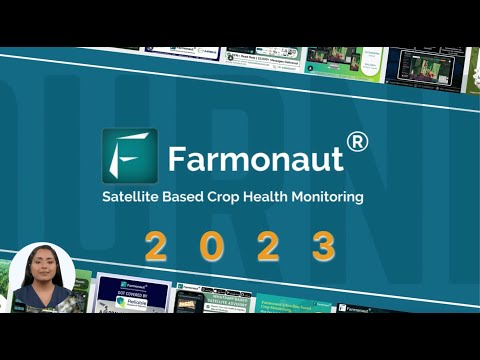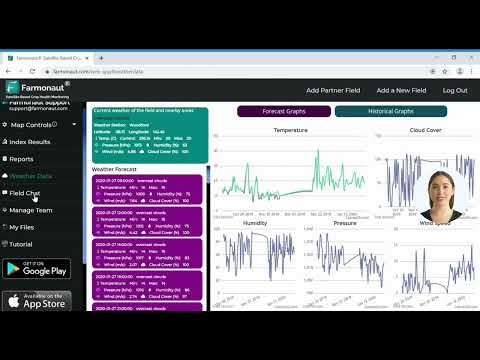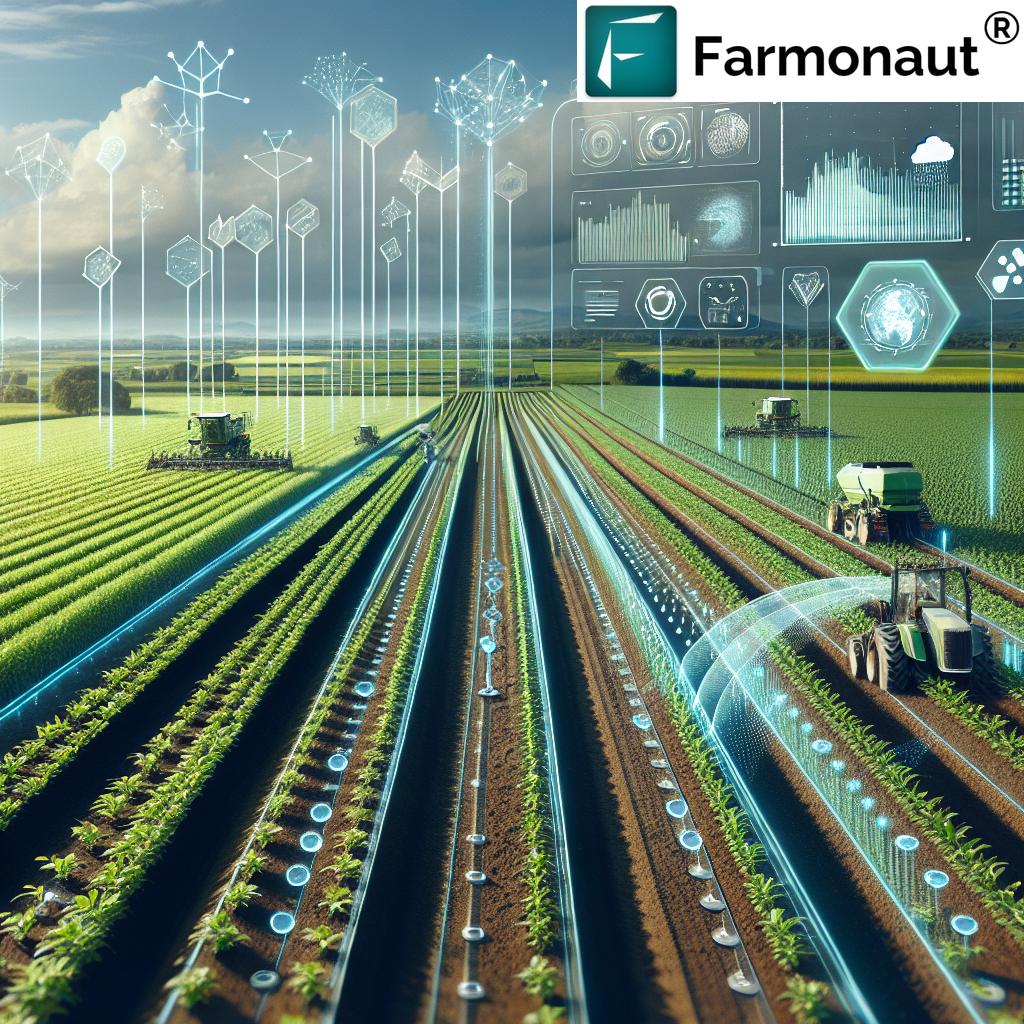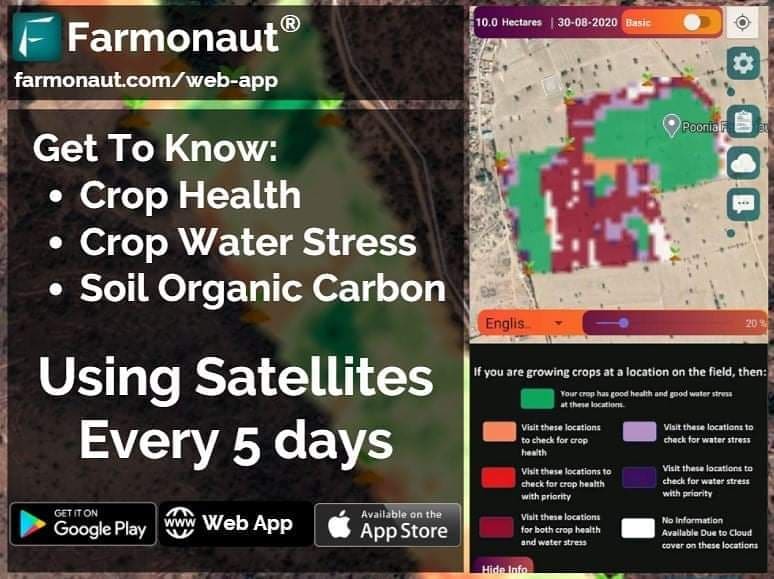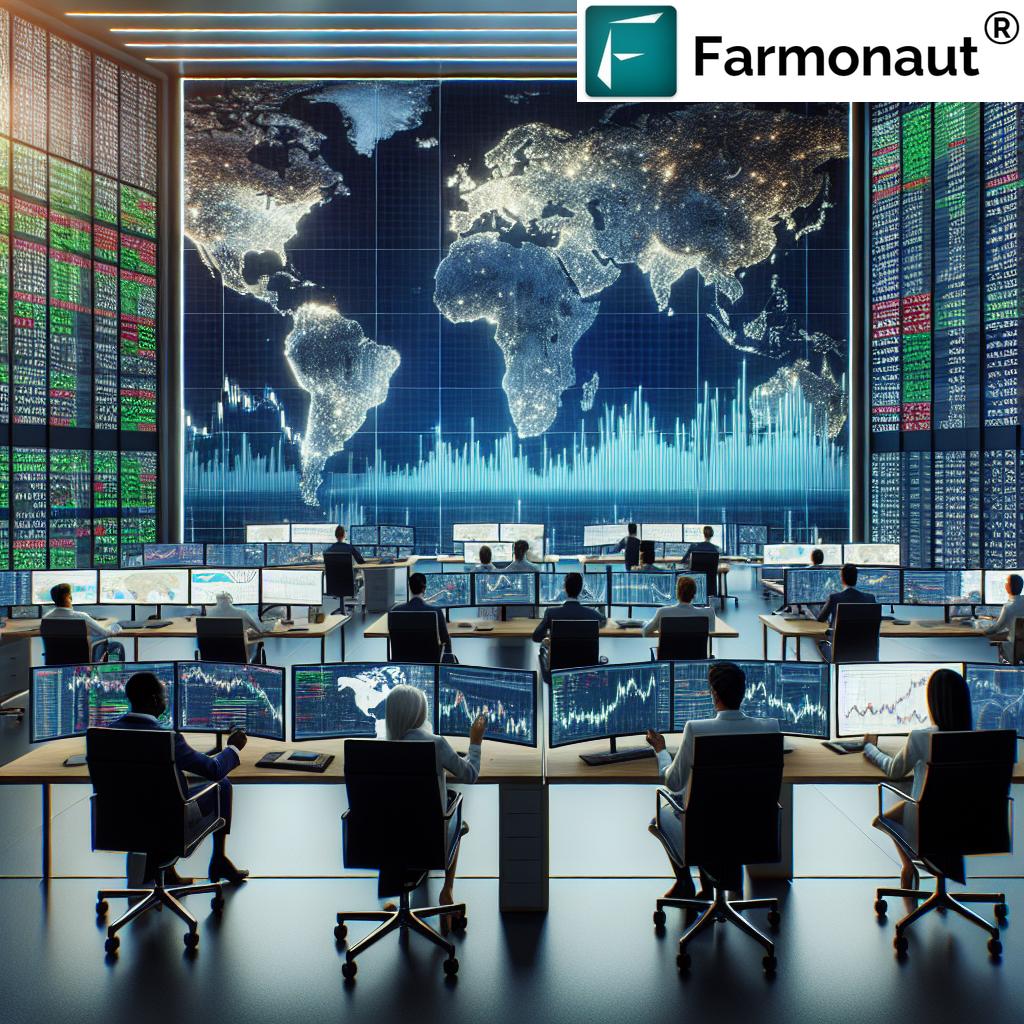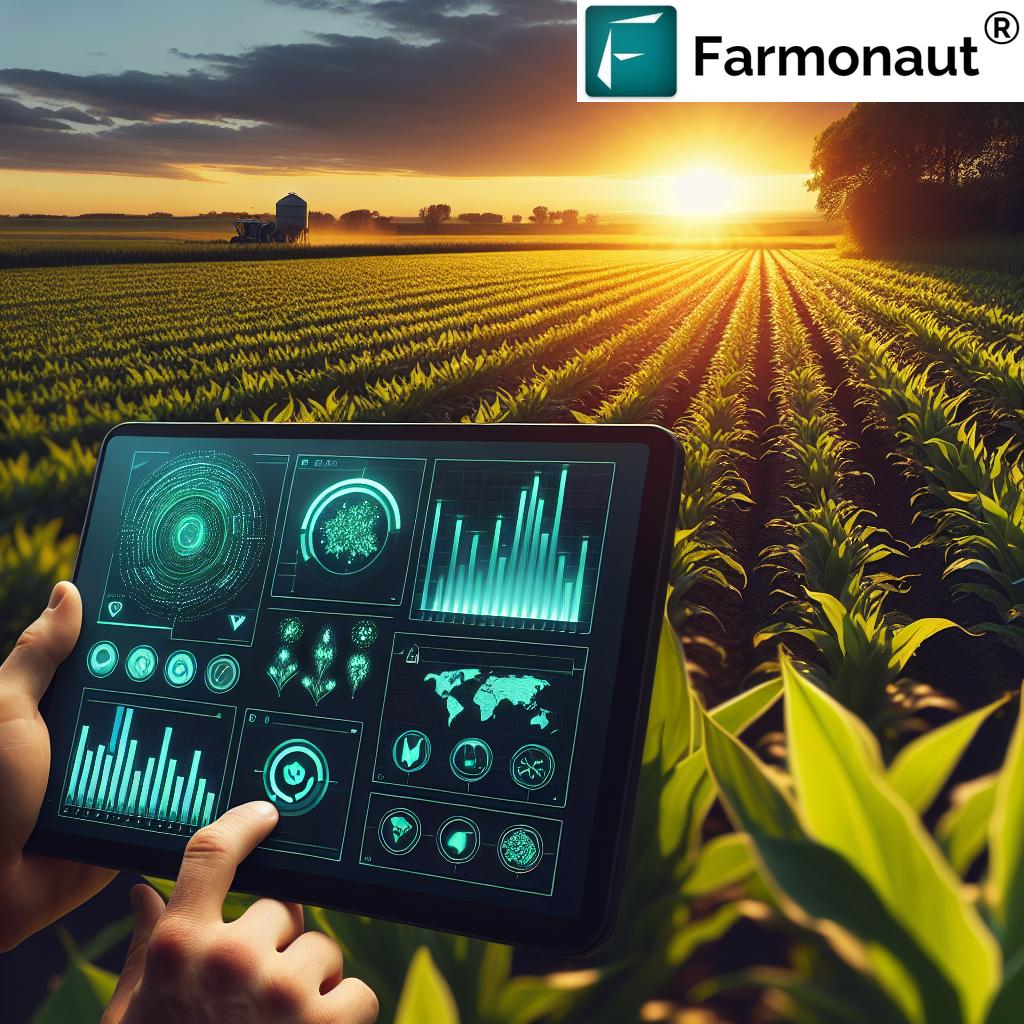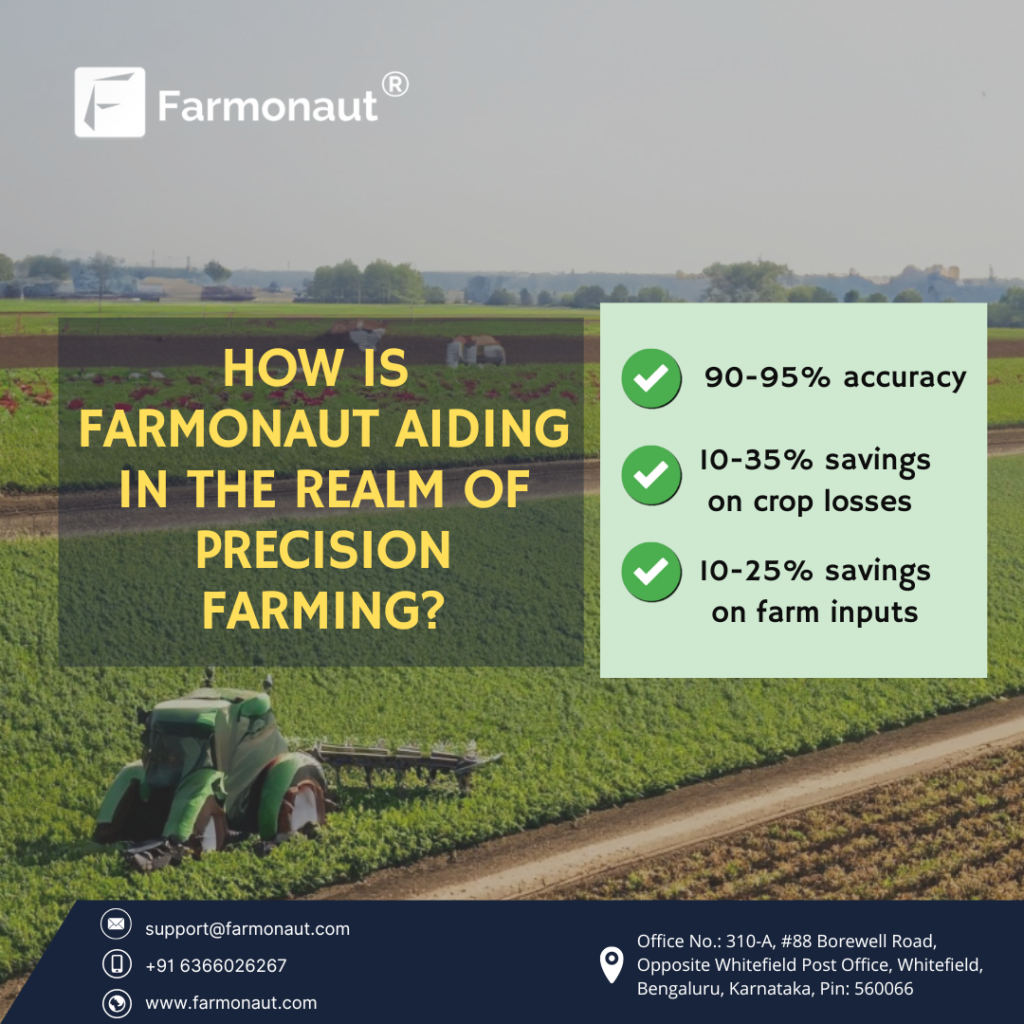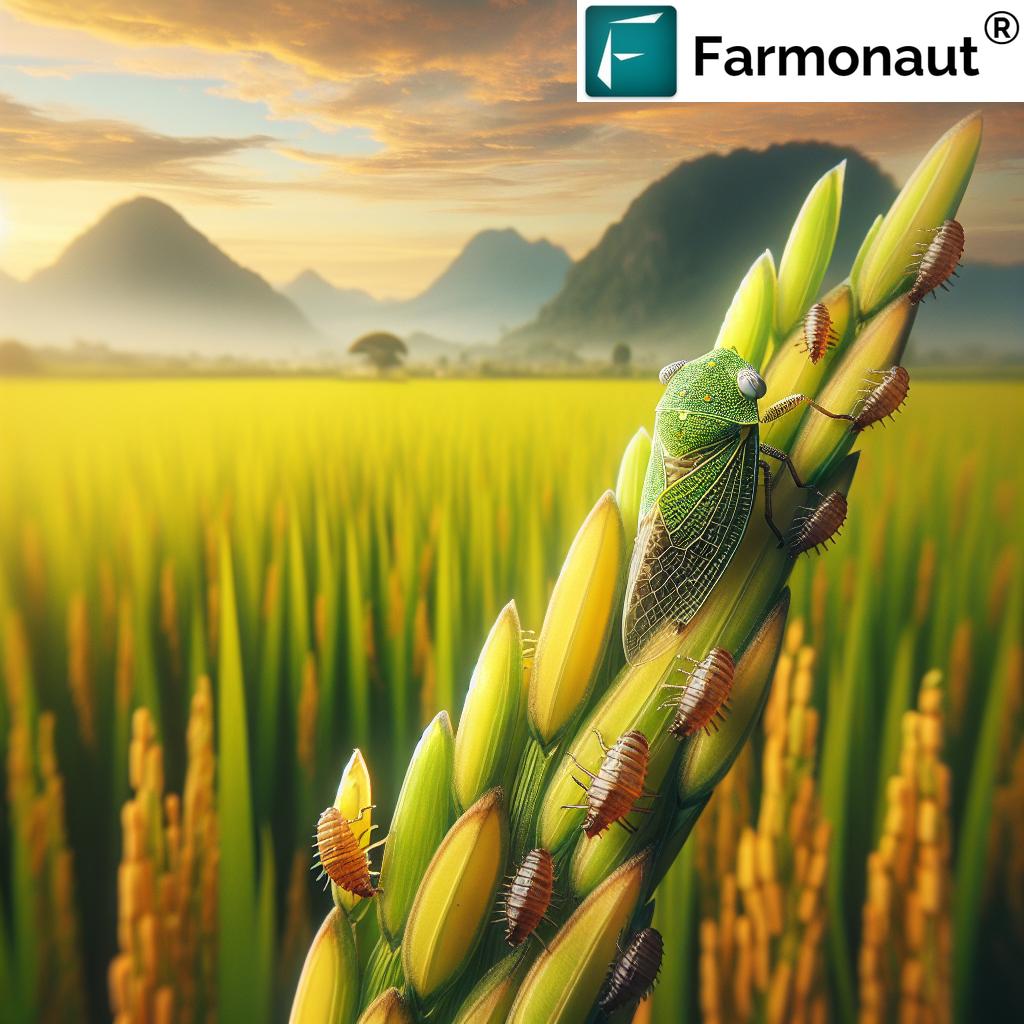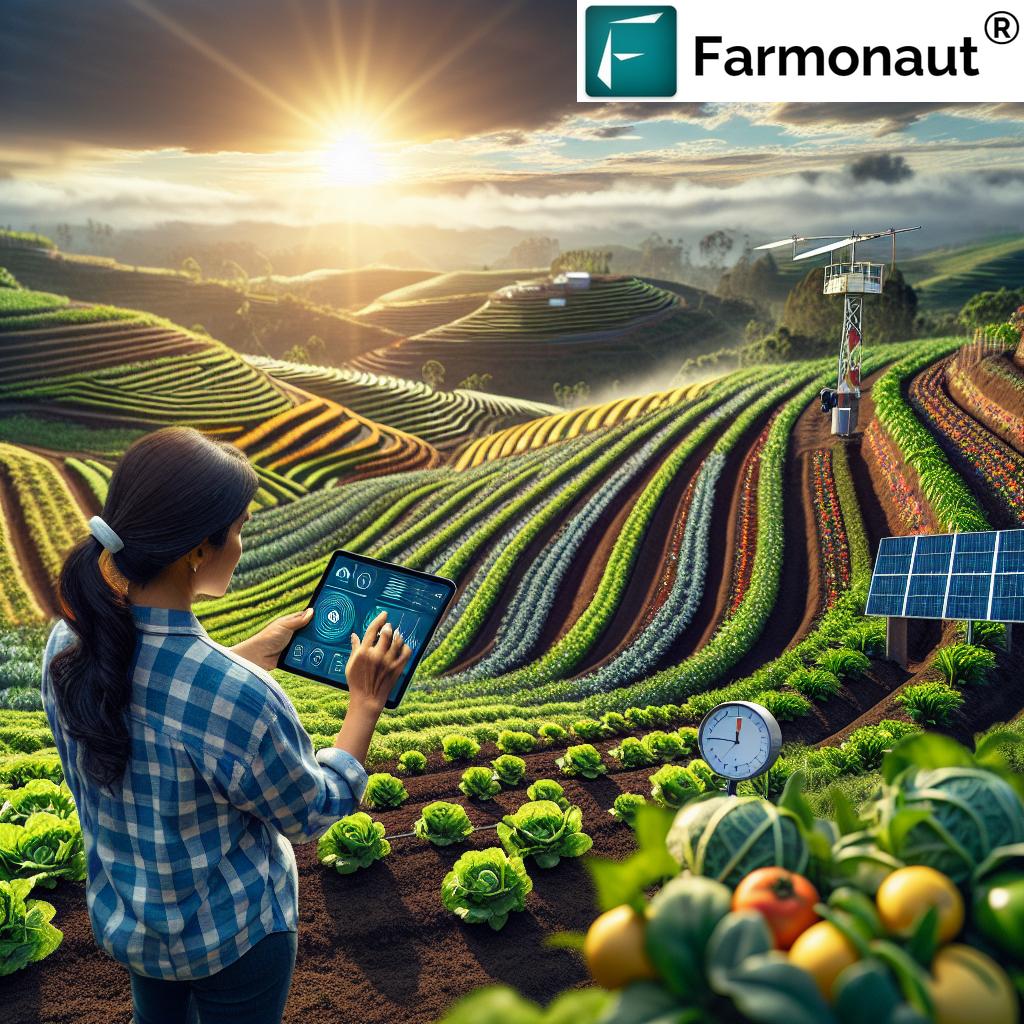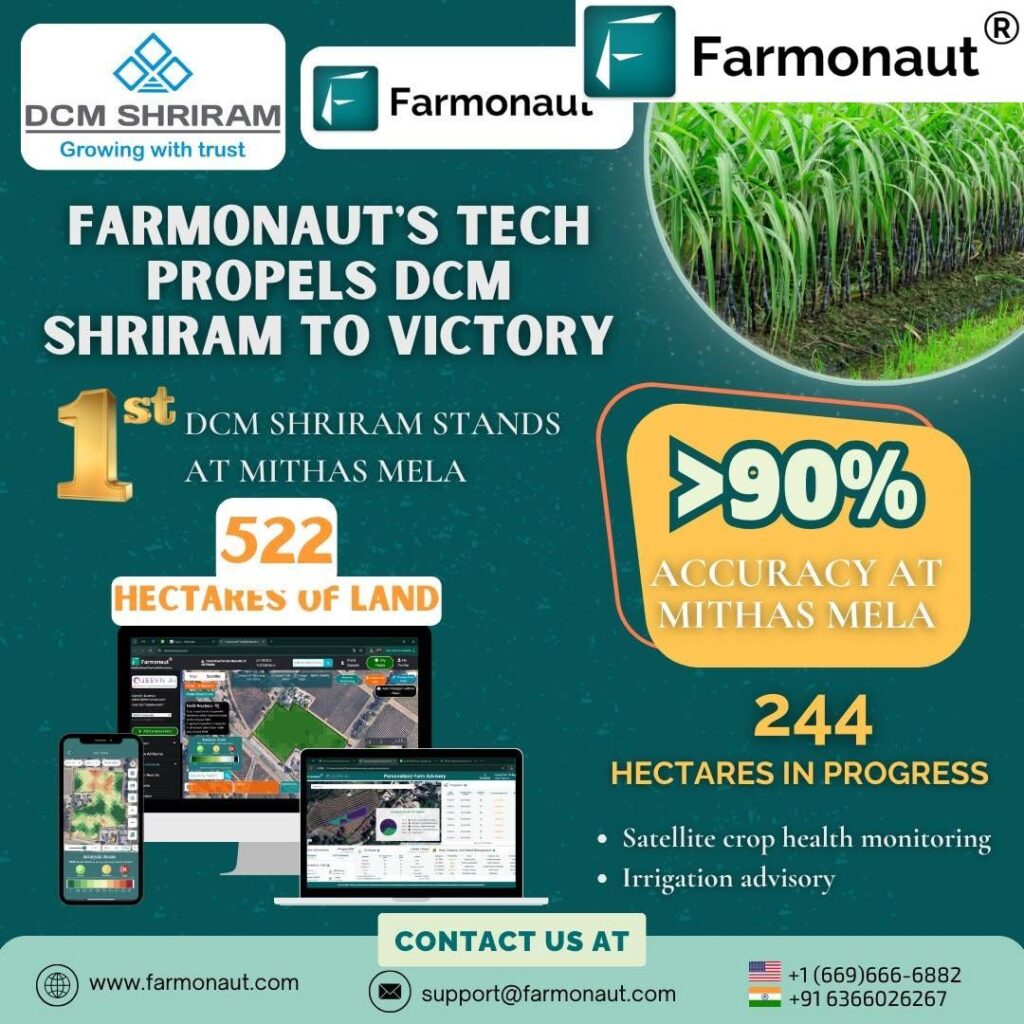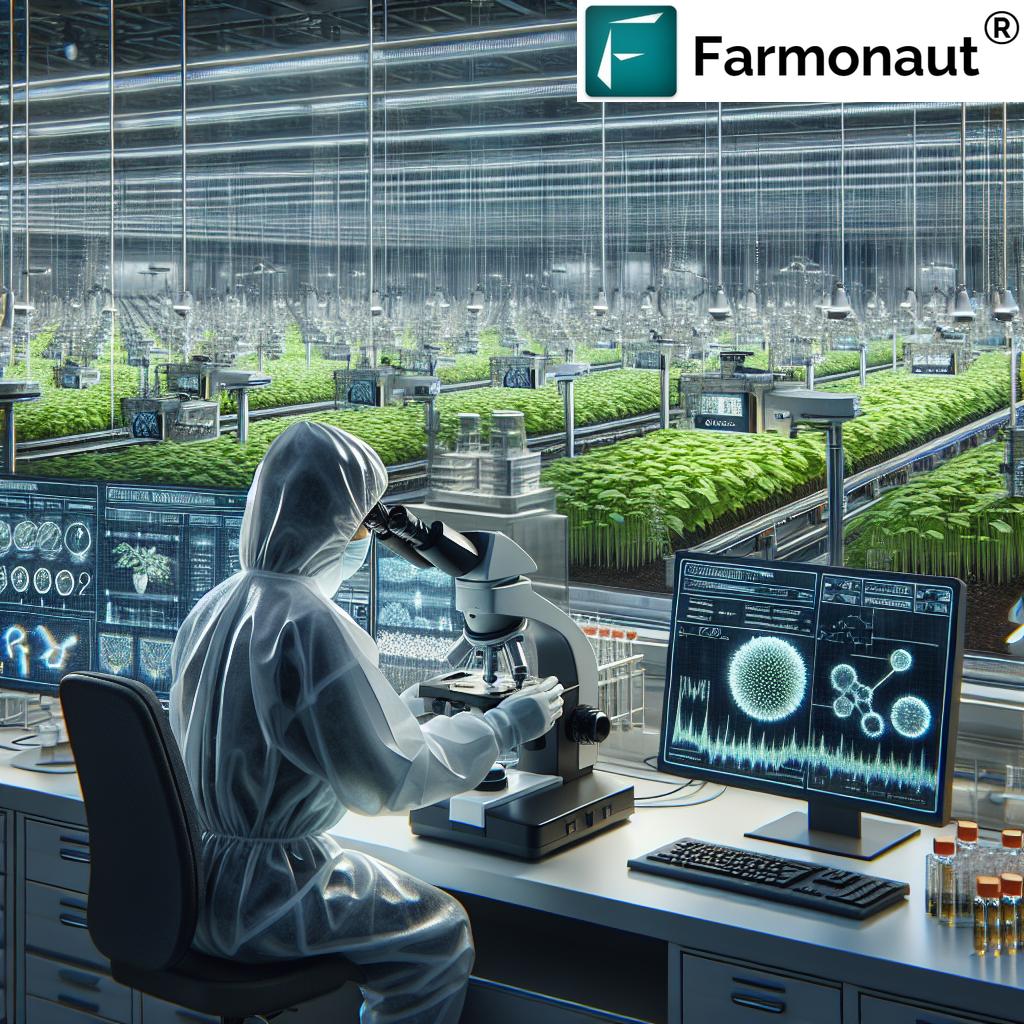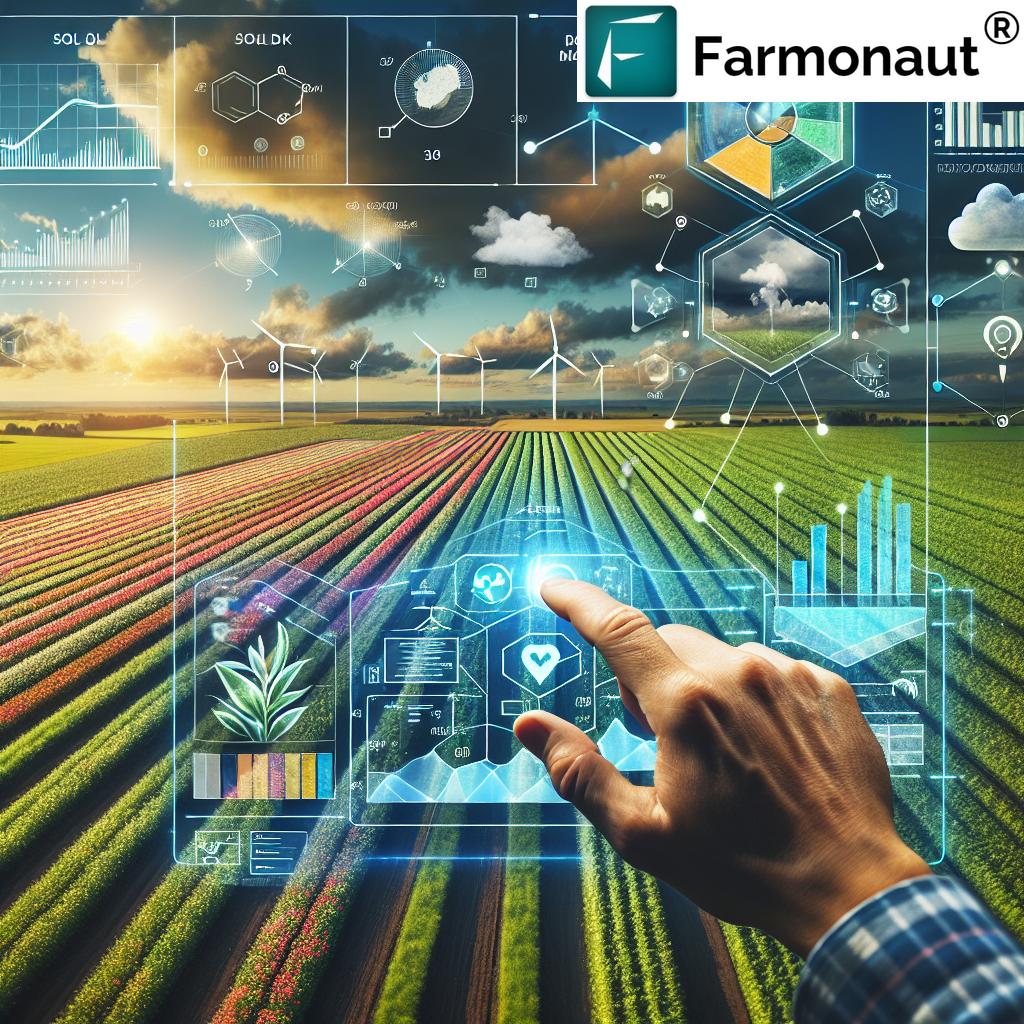Table of Contents
- Introduction
- Trivia: Did You Know?
- 1. Precision Farming: The Smart Revolution
- 2. Autonomous Machinery: The Rise of Robot Farms
- 3. Artificial Intelligence in Agriculture: Data-Driven Decisions
- 4. Controlled Environment Agriculture & Vertical Farming
- 5. Nanotechnology: Farming at the Nano Scale
- 6. Blockchain in Agriculture Supply Chain
- 7. Robotics in Agriculture: Automation in Action
- Climate Resilient Farming Practices & Future Outlook
- Farmonaut: Democratizing Precision Agriculture
- Comparison Table of Farm Innovations
- Frequently Asked Questions (FAQ)
- Conclusion
Agriculture and Technology: 7 Shocking Farm Innovations

Over the past few decades, agriculture has experienced a profound transformation. Rapid advances in technology—from precision farming and artificial intelligence to robotics and blockchain—are reshaping how we produce food, manage resources, and respond to climate and labor shortages. These agricultural technology innovations boost productivity, drive sustainability, and build resilience in the face of changing conditions and mounting global challenges.
In this comprehensive guide, we explore seven shocking farm innovations powering the digital agriculture revolution and highlight how platforms such as Farmonaut are making these advances accessible to farmers worldwide.
“Precision agriculture can increase crop yields by up to 30% using AI-driven data analysis.”
1. Precision Farming: The Smart Revolution
Precision agriculture—sometimes called smart farming—harnesses GPS, IoT sensors, and big data analytics to empower farmers with actionable insights for every field, crop, and season. By using digital tools to monitor and address variability in soil, weather, and crop health, we can make precise decisions about planting, irrigation, fertilization, and harvesting.
- IoT Sensors: Continuously monitor real-time data—such as soil moisture, nutrient levels, and crop growth—to shape smarter decisions.
- GPS & Satellite Imagery: Track patterns and conditions across every parcel of land, ensuring resource allocation is both targeted and efficient.
- Data Analytics: Analyze environmental, biological, and operational data to optimize yields, reduce wastage, and cut costs.
For example, IoT-connected soil sensors detect when a portion of the field needs more water, triggering targeted irrigation that saves resources. GPS-guided tractors deliver fertilizers exactly where needed, enhancing effectiveness and minimizing environmental impact.
Ready to take control of your fields with digital insight? Learn how Farmonaut’s Large Scale Farm Management App brings scalable remote sensing, advanced mapping, and real-time field analytics to your fingertips for optimized, efficient farm operations.
2. Autonomous Machinery: The Rise of Robot Farms
The next frontier in farming lies with autonomous farm machinery—self-driving tractors, GPS-guided equipment, and robotic harvesters that propel automation to new heights. These machines leverage AI, machine vision, and advanced sensors to operate with minimal human intervention.
- Self-Driving Tractors: Navigate fields using GPS, minimize errors, and efficiently cover large areas for planting, spraying pesticides, and harvest.
- Robotic Harvesters: Pick fruits and vegetables autonomously—reducing labor needs and increasing efficiency.
- Automation in Operations: Robots accomplish repetitive, hazardous, or time-intensive tasks 24/7, transforming traditional farm management.
By integrating AI-driven automation and precision guidance, farms are meeting the dual challenges of labor shortages and growing global food demands—while simultaneously reducing operational costs.
For streamlined fleet and equipment oversight, Farmonaut’s Fleet Management Solutions let you track agricultural vehicles, optimize resource use, and enhance operational safety with real-time analytics.
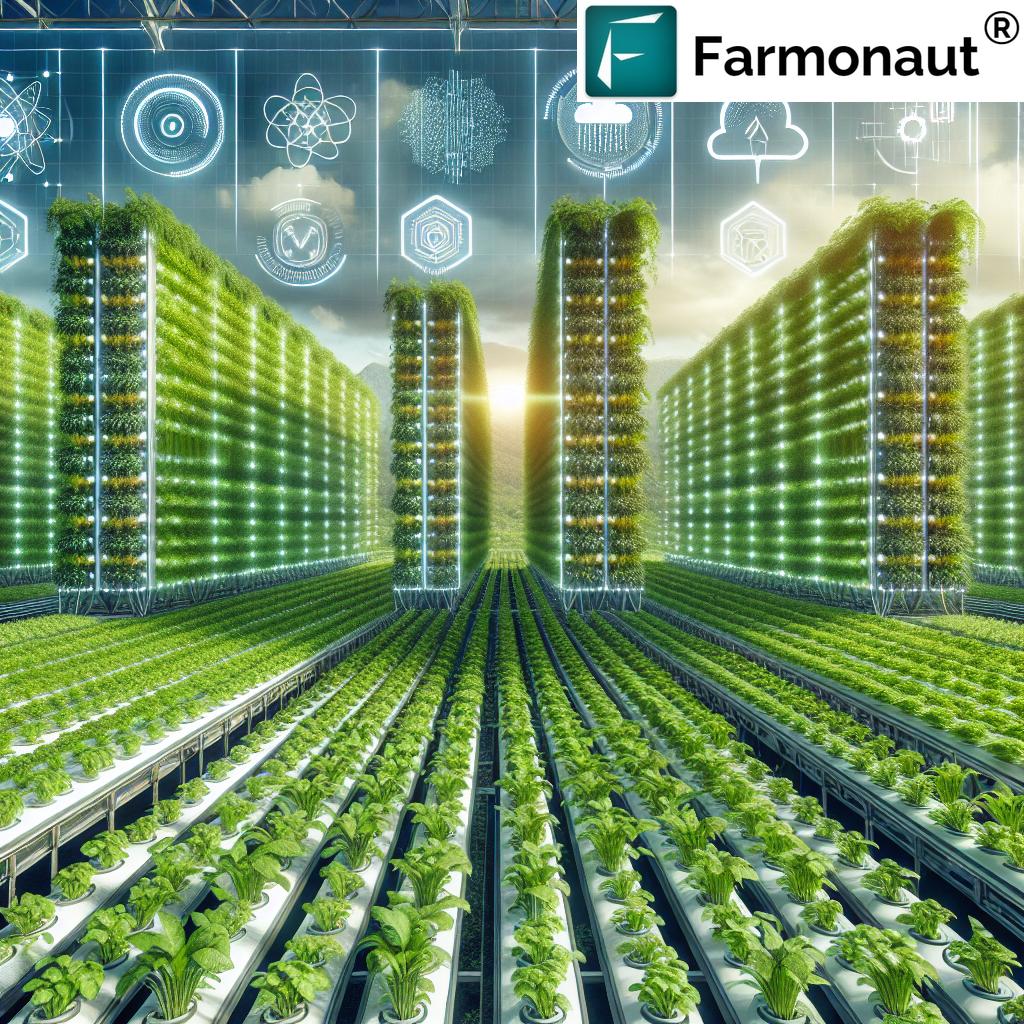
“Robotics in farming can reduce labor costs by nearly 40% while improving efficiency and sustainability.”
3. Artificial Intelligence in Agriculture: Data-Driven Decisions
Artificial intelligence in agriculture (AI) is enabling us to make decisions at scale by analyzing sprawling data sets collected from sensors, satellites, and drones. AI models can predict yields, detect disease or pests, and recommend optimal field management practices.
- AI-Powered Insights: Platforms use machine learning to deliver custom guidance—anticipating weather patterns, resource needs, and input timing.
- Early Detection: Advanced vision and analytics systems can spot signs of crop stress, disease, or pest outbreaks before they become visible to the naked eye.
- Automated Resource Management: Automate watering, fertilization, and environmental controls for more sustainable use of resources and time.
By leveraging AI for environmental monitoring and biodiversity preservation, we promote food security, enhance productivity, and support sustainable agriculture. In regions like India and Africa, AI-powered weather forecasting is delivering critical insights to smallholders, improving resilience and livelihoods.
4. Controlled Environment Agriculture & Vertical Farming
Controlled Environment Agriculture (CEA) involves growing crops in highly controlled, protected spaces—such as greenhouses or stacked vertical farms. Here, every aspect of the growth environment—including light, temperature, humidity, and CO2 levels—can be precisely managed.
- Year-Round Production: Grow fresh, nutritious food regardless of external weather, climate change, or local soil constraints.
- Resource Efficiency: Vertical farming maximizes space, requires less land, and uses up to 95% less water than open-field agriculture.
- Reduced Chemical Use: Controlled conditions keep pests and diseases in check, minimizing pesticides and maximizing food safety.
CEA and vertical farming are powering sustainable food production in urban environments. This approach is especially vital in densely populated areas, where arable land is scarce and traditional farming isn’t feasible.
5. Nanotechnology: Farming at the Nano Scale
Nanotechnology in farming is revolutionizing our approach to crop nutrition, pest control, and environmental monitoring. By deploying nanofertilizers, nano pesticides, and advanced nano sensors, we can detect and address crop needs at an unprecedented level of precision.
- Nanofertilizers & Nanopesticides: Deliver nutrients and pesticides directly to target sites, reducing input usage, environmental runoff, and costs.
- Nano Sensors: Embedded in soil or on plant surfaces, these devices monitor micronutrient levels, disease pathogens, and water availability in real time.
- Sustainability: Targeted delivery and reduced chemical loads promote soil health and protect local ecosystems.
For instance, graphene-based nano sensors can monitor nitrate and phosphate concentrations in soil and water supplies, enabling farmers to optimize fertilization schedules and improve environmental outcomes.
6. Blockchain in Agriculture Supply Chain
Blockchain is redefining transparency, trust, and traceability in the agriculture supply chain. By recording every step in a secure, immutable ledger, blockchain enables us to:
- Trace Product Origins: Consumers can track food from farm to fork, boosting food safety and quality assurance.
- Ensure Fair Trade: Producers and buyers have verifiable records, reducing fraud and enabling sustainable, ethical sourcing.
- Build Brand Trust: Authenticity and traceability are critical for corporate clients in food, textile, and other sectors.
Whether tracing a single tomato or an entire cotton harvest, blockchain-equipped platforms create full visibility into every transaction, transformation, and transfer. This digital trust is essential for building resilient global food systems.
Discover how Farmonaut’s Blockchain Traceability Solution brings end-to-end transparency and anti-fraud protection to modern agricultural supply chains—enabling secure records for every crop’s journey!
7. Robotics in Agriculture: Automation in Action
Robotics in agriculture is rapidly advancing, automating crucial processes such as planting, weeding, irrigation, harvest, and packaging. These advanced robots can:
- Autonomously Harvest Crops: Robotic harvesters sort, pick, and collect crops with astonishing accuracy.
- Precision Weeding: Robots identify and remove weeds, lowering labor costs and chemical herbicide use.
- Efficient Operations: Improve productivity and address labor shortages while consistently delivering high-quality outcomes.
These innovations optimize every step from seed to supermarket, making smart farming solutions a reality for farms of all sizes.
Tackle your farm’s environmental impact head-on with Farmonaut’s Carbon Footprinting Solution. Access real-time emissions data and unlock compliance for more sustainable, climate-conscious farm operations!
Climate-Resilient Farming Practices & Future Outlook
As climate change intensifies weather volatility and threatens traditional food production systems, climate resilient farming practices are more important than ever. Innovation is helping us adapt through:
- Climate-Adaptive Crop Varieties: Breeding drought- and heat-tolerant crops to withstand shifting weather patterns.
- Advanced Soil & Resource Management: Leveraging AI-driven soil monitoring and precision irrigation for efficient use of inputs and better yields.
- Data-Driven Forecasting: Deploying microclimate monitoring systems for hyperlocal data and risk management.
- Integration with Satellite Monitoring: Real-time imagery and analytics support rapid responses to extreme events and long-term planning.
Farmonaut: Democratizing Precision Agriculture for Everyone
Farmonaut is at the forefront of agricultural technology innovations, bringing precision agriculture and advanced technologies to farmers worldwide—regardless of farm size or location. By blending satellite imagery, AI, blockchain, and machine learning, Farmonaut delivers accessible, data-driven insights that empower our farming communities to overcome modern challenges.
- Satellite-Based Crop Health Monitoring: Gain real-time visibility into crop and soil health, receive alerts about stress or anomalies, and unlock tailored resource recommendations to supercharge yields.
- AI Advisory System (Jeevn): Personalized, field-specific guidance leveraging real-time weather forecasting and expert agronomic models for smarter management and higher productivity.
- Blockchain-Driven Traceability: Ensure end-to-end transparency with digital ledgers that secure your crop journey—from farm to consumer.
- Resource and Fleet Management: Monitor autonomous machinery and optimize operations for cost savings and efficiency.
- Carbon Footprinting: Track, manage, and lower your environmental footprint with real-time emissions analytics and sustainability scoring.
Farmonaut’s platform is available as an android, iOS, and web app, and even through API for enterprises and developers (API access | Developer Docs).
- Flexible, Cost-Effective Subscriptions: Choose a package that matches your operation—individual, agribusiness, government, or corporate.
- Versatile Use Cases: Comprehensive solutions for smallholders, plantation management, large-scale operators, NGOs, policy agencies, and food and textile industry traceability.
- No Expensive Hardware Required: Farmonaut leverages satellite imagery, ensuring precision agriculture remains affordable for every user.
Experience the full suite of functionalities—or scale as you grow—with Farmonaut’s Agro Admin App. For forest and plantation management, tap here.
Comparison Table of Farm Innovations
| Innovation Name | Core Technology | Primary Benefit | Estimated Productivity Improvement (%) | Climate Resilience Rating |
|---|---|---|---|---|
| Precision Agriculture | AI, IoT, GPS, Data Analytics, Satellite | Yield Increase, Resource Optimization | 25–30% | High |
| Autonomous Machinery | Robotics, AI, GPS, Sensors | Labor Savings, Efficiency | 20–35% | Moderate |
| Artificial Intelligence in Agriculture | AI, ML, Satellite, Sensors | Disease Detection, Forecasting | 15–25% | High |
| Controlled Environment Agriculture (CEA) | Sensors, AI, Automation, LED Lighting | Sustainable, Year-Round Food | 30–45% | High |
| Nanotechnology in Farming | Nanomaterials, Sensors | Reduced Inputs, Targeted Action | 10–18% | Moderate |
| Blockchain in Agriculture Supply Chain | Blockchain, Digital Ledger | Transparency, Fraud Reduction | Depends (Indirect) | Moderate |
| Robotics in Agriculture | Robotics, AI, Machine Vision | Automation, Reduced Labor Cost | 20–32% | High |
Frequently Asked Questions (FAQ)
-
What is precision agriculture and how does it benefit farmers?
Precision agriculture leverages technologies like AI, IoT, satellite imagery, and GPS to help farmers make data-driven decisions tailored to individual field conditions. This leads to optimized input usage, increased yields, reduced waste, and improved sustainability. -
How does autonomous machinery impact farm labor?
Autonomous machinery—including self-driving tractors and robotic harvesters—minimizes reliance on manual labor, improves efficiency, and reduces human error. This addresses labor shortages and allows continuous operation, even in challenging conditions. -
What role does artificial intelligence play in agriculture?
AI powers predictive analytics, real-time monitoring, automated disease/pest detection, weather forecasting, and optimizes farm management decisions. It helps farmers enhance productivity and respond rapidly to changing environmental conditions. -
How does blockchain improve agricultural supply chains?
Blockchain provides transparent, immutable records for every stage of the supply chain, ensuring authenticity, reducing fraud, and enabling consumers to trace the journey of their food products from farm to fork. -
How are robotics transforming farm operations?
Robotics automate key farming tasks like planting, weeding, and harvesting. They improve speed, accuracy, and reduce both operational costs and the environmental impact of traditional practices. -
Is Farmonaut’s platform suitable for smallholder or large-scale farms?
Yes. Farmonaut’s flexible, subscription-based platform serves both smallholder farmers seeking affordable crop monitoring and agribusiness operators managing extensive plantation and fleet operations. -
What is controlled environment agriculture, and why is it important?
Controlled environment agriculture (CEA) includes greenhouses and vertical farms where all growing conditions are controlled. CEA enables sustainable, year-round crop production, conserves water, and is well-suited for urban or arid environments. -
How can I access Farmonaut’s services?
Farmonaut offers Android, iOS, and web apps for individual farmers, plus robust API access (API here) for integration into enterprise and research applications. -
Does Farmonaut offer crop loan or insurance solutions for farmers?
Yes. Satellite-based verification for crop loans and insurance improves financial access while reducing fraud risk for institutions and policyholders.
Conclusion: Technology & Innovation for Our Sustainable Farming Future
From AI-empowered precision agriculture to blockchain-backed supply chain integrity, today’s digital farm innovations are the backbone of a new, resilient food system. These advances not only boost productivity and reduce environmental impact, but also empower farmers—regardless of scale—with tools to navigate weather volatility, labor shortages, and climate change.
At Farmonaut, our mission is to ensure that technology is affordable and accessible for all, driving sustainability and ensuring food security for generations to come.
Ready to join the agricultural technology revolution? Download the Farmonaut app to experience smart farming solutions—no expensive sensors or hardware required!







